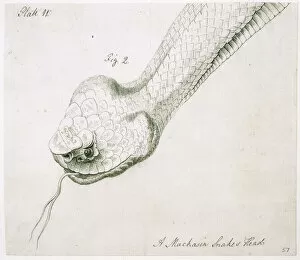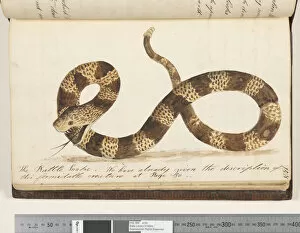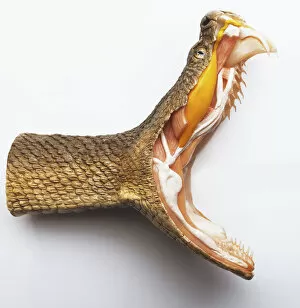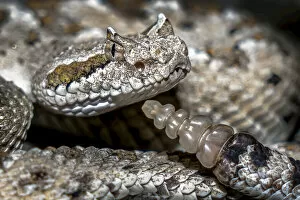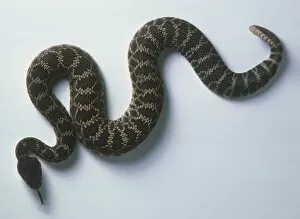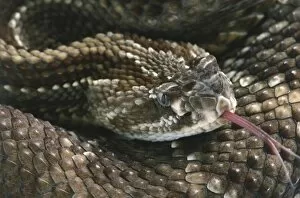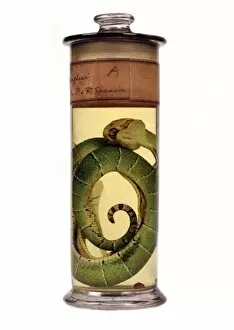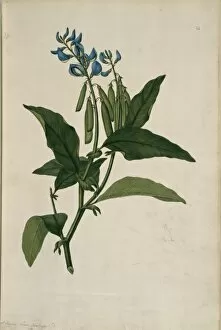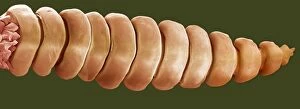Crotalinae Collection
"Crotalinae: A Fascinating World of Venomous Serpents" In the vast wilderness, a Western Diamondback Rattlesnake (Crotalus atrox) slithers gracefully
All Professionally Made to Order for Quick Shipping
"Crotalinae: A Fascinating World of Venomous Serpents" In the vast wilderness, a Western Diamondback Rattlesnake (Crotalus atrox) slithers gracefully, its mesmerizing pattern glistening under the sun. From above, we witness nature's intricate dance unfold as it navigates through its domain. Another member of the Crotalinae family emerges - an Agkistrodon piscivorus, commonly known as a cottonmouth snake. Its ominous presence sends shivers down our spines, reminding us of their potent venom and stealthy hunting skills. Flipping through page 158 reveals an ancient masterpiece titled "The Rattle Snake" from 1810-17. The watercolor and manuscript text capture the essence of these enigmatic creatures with astonishing detail. A jaw-dropping image captures a rattlesnake with its mouth wide open, exposing its fearsome fangs and revealing the intricate interior of its mouth and neck in cross-section. It serves as a reminder that danger lurks within this elegant predator. Behold. A sidewinder rattlesnake poses for a portrait, showcasing its unique method of movement across sandy terrains. Its sideways slithering leaves behind fascinating patterns in the desert sands. An overhead view presents us with an awe-inspiring sight - a coiled-up rattlesnake with tongue outstretched to taste the air around it. This close-up glimpse allows us to appreciate their beauty while respecting their lethal potential. Trimeresurus albolabris makes multiple appearances; this bamboo pit viper captivates with vibrant scales that blend seamlessly into lush foliage—an exquisite example of camouflage perfected by evolution's handiwork. As if echoing nature's diversity, various species grace our vision once more—Crotalus sp. , another mysterious rattlesnake species yet to be identified fully.


